
JOURNAL OF THE SOCIETY OF LEATHER TECHNOLOGISTS AND CHEMISTS
Scope & Guideline
Bridging tradition and innovation in leather chemistry.
Introduction
Aims and Scopes
- Sustainable Leather Processing:
Research aimed at developing environmentally friendly methods and materials for leather production, including the use of bio-based agents and waste recycling. - Material Science and Properties of Leather:
Investigation into the physical and chemical properties of leather and its composites, focusing on moisture permeability, mechanical strength, and durability. - Biotechnology in Leather Technology:
Application of biotechnological methods, including enzymatic treatments and microbial processes, to improve leather processing and waste management. - Historical and Cultural Aspects of Leather:
Studies that explore the historical significance of leather, including preservation techniques for historical artifacts and the cultural implications of leather usage. - Analytical Techniques in Leather Research:
Development and application of analytical methods to assess leather quality, environmental impact, and the efficacy of various tanning agents.
Trending and Emerging
- Sustainable Practices and Circular Economy:
A growing emphasis on sustainability is evident, with research focused on circular economy initiatives, waste valorization, and the development of eco-friendly leather alternatives. - Advanced Material Development:
Research into new materials, such as regenerated leather and composites using agricultural by-products, is on the rise, showcasing innovative solutions to traditional leather production. - Environmental Impact Assessments:
There is an increasing trend towards comprehensive life cycle assessments of leather processing, focusing on minimizing carbon footprints and evaluating ecological impacts. - Integration of Nanotechnology:
The application of nanotechnology in leather treatments, such as antimicrobial coatings and improved durability, is gaining traction as researchers explore its potential benefits. - Biotechnological Innovations:
The use of biotechnological methods, including microbial processes and enzymatic treatments, is becoming more prominent, reflecting a shift towards more sustainable processing methods.
Declining or Waning
- Traditional Tanning Methods:
There is a noticeable decrease in research focused on conventional tanning techniques, as the industry shifts towards more sustainable and innovative approaches. - Leather Fashion Trends and Consumer Behavior:
Research on fashion-related aspects of leather, such as trends and consumer preferences, has diminished, possibly due to the growing emphasis on sustainability over style. - Chemical Treatments and Additives:
Studies centered on traditional chemical treatments and additives in leather processing have become less frequent, as the focus shifts to more eco-friendly alternatives. - Market Dynamics of Leather Trade:
Papers discussing the economic aspects and global trade dynamics of leather have seen a decline, potentially due to the market's evolving nature and competition from synthetic alternatives. - Leather Waste Management Techniques:
While waste management remains a topic of importance, the focus on conventional waste disposal methods has waned in favor of innovative recycling and upcycling strategies.
Similar Journals
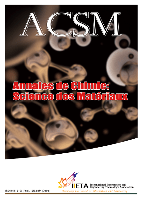
ANNALES DE CHIMIE-SCIENCE DES MATERIAUX
Driving Innovation in Materials Chemistry ResearchANNALES DE CHIMIE-SCIENCE DES MATERIAUX, published by the International Information & Engineering Technology Association, serves as a significant resource in the field of materials chemistry. With an ISSN of 0151-9107 and an E-ISSN of 1958-5934, this journal has been contributing to the scientific discourse since its inception in 1947. The journal is classified in the Q3 category for Materials Chemistry in 2023, positioning it within the 29th percentile in the Scopus ranking for materials science, underscoring its commitment to advancing knowledge and innovation in this vital area of research. Although currently not an open access publication, the journal welcomes submissions that explore a broad range of topics related to material science, thereby facilitating discussions that can lead to groundbreaking discoveries. Researchers, professionals, and students are encouraged to engage with the journal to stay at the forefront of materials chemistry, especially given its historical context and ongoing relevance in academic and industrial applications.

RUSSIAN CHEMICAL BULLETIN
Connecting Researchers through Pioneering Chemical Insights.RUSSIAN CHEMICAL BULLETIN, published by SPRINGER, serves as a pivotal resource in the field of general chemistry, covering a wide array of topics that impact both theoretical and applied chemistry. With an ISSN of 1066-5285 and a presence since 1993, this journal provides a platform for disseminating significant research findings, practical applications, and novel methodologies within the broader chemistry community. While it currently holds a Q3 ranking in the Chemistry (miscellaneous) category and occupies the 230th position out of 408 in the Scopus rankings, its reputation continues to grow, fostering collaboration and innovation among researchers and professionals alike. Although the journal does not offer an open-access model, it is committed to making findings accessible within the academic community, ensuring that valuable insights can inform future research. With an anticipated convergence of studies extending to 2024, the RUSSIAN CHEMICAL BULLETIN remains an essential reference for those dedicated to advancing chemical science.
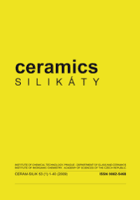
CERAMICS-SILIKATY
Advancing the Science of Ceramics and CompositesCERAMICS-SILIKATY is a distinguished open-access journal published by the University of Chemistry and Technology, Prague, specializing in the fields of Ceramics and Composites, Analytical Chemistry, Chemical Engineering, and Materials Chemistry. Since its inception in 1991, this journal has played a pivotal role in disseminating cutting-edge research and innovative findings in the study of ceramics, emphasizing both fundamental and applied aspects. With a commitment to accessibility since 2000, CERAMICS-SILIKATY promotes knowledge sharing among researchers, professionals, and students globally. The journal's current standing in the Q3 Quartile across several categories highlights its significant contributions and relevance in the academic community. As a hub for interdisciplinary research, the journal invites submissions that advanced our understanding of ceramic materials and their applications, positioning itself as an essential resource for those engaged in the forefront of materials science.
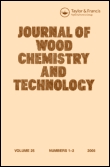
JOURNAL OF WOOD CHEMISTRY AND TECHNOLOGY
Unveiling the Science Behind Sustainable Wood SolutionsJournal of Wood Chemistry and Technology, published by Taylor & Francis Inc, is a premier academic platform dedicated to advancing the fields of wood chemistry and technology since its inception in 1981. With an impressive converged publication run extending through 2024, this journal addresses pivotal research in chemical engineering and materials science, achieving a current categorization in Q2 for both Chemical Engineering and Chemistry, alongside a Q3 ranking in Materials Science. As evidenced by its Scopus rankings, it occupies a respectable position within the academic community, fostering discussions that bridge theoretical innovation and practical applications relevant to the industry. While access is not open, the journal remains an essential resource for researchers, professionals, and students eager to explore the complexities of wood chemistry, enhancing their understanding and contributing to sustainable practices in materials development.
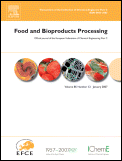
FOOD AND BIOPRODUCTS PROCESSING
Transforming raw materials into culinary excellence.FOOD AND BIOPRODUCTS PROCESSING, published by Elsevier, is a leading journal dedicated to advancing the fields of biochemistry, biotechnology, chemical engineering, and food science. With a strong impact factor and robust rankings—Q2 in Biochemistry and Biotechnology, and Q1 in Food Science—it serves as an essential resource for researchers, industry professionals, and students alike. The journal focuses on innovative research and practical applications in the processing of food and bioproducts, spanning from raw material transformation to product development. By fostering the exchange of knowledge and ideas, FOOD AND BIOPRODUCTS PROCESSING aims to enhance food quality and sustainability while addressing global challenges in food security and environmental impact. With an accessible format and a diverse pool of contributors, this publication stands as a vital platform for groundbreaking studies, making significant contributions to the advancement of technology and practices in food processing and production.

BOLETIN DE LA SOCIEDAD ESPANOLA DE CERAMICA Y VIDRIO
Pioneering Discoveries in Ceramic and Composite TechnologiesBOLETIN DE LA SOCIEDAD ESPANOLA DE CERAMICA Y VIDRIO, published by Elsevier, is a premier open-access journal dedicated to advancing research in the fields of Ceramics and Composites, Industrial and Manufacturing Engineering, and Mechanics of Materials. With an impressive impact factor and a strong ranking within its categories—Q2 in 2023 for multiple engineering domains—it serves as a vital resource for academics, industry professionals, and students alike. The journal has embraced an open-access model since 2015, providing widespread accessibility to the latest findings and innovations in ceramic and glass sciences, thus encouraging collaboration and knowledge sharing within the global research community. Published quarterly, and with a focus on interdisciplinary applications, the BOLETIN DE LA SOCIEDAD ESPANOLA DE CERAMICA Y VIDRIO is not only influential in shaping research agendas but also essential for anyone engaged in the evolving landscape of materials science.
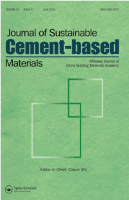
Journal of Sustainable Cement-Based Materials
Shaping the landscape of sustainable cement technologies.Journal of Sustainable Cement-Based Materials, published by TAYLOR & FRANCIS LTD, is an esteemed academic journal dedicated to advancing the field of sustainable construction materials, particularly within the realms of cement-based technologies. With its ISSN 2165-0373 and E-ISSN 2165-0381, the journal emphasizes impactful research focused on environmentally friendly practices and innovations in material development. Based in the United Kingdom, it has garnered a strong reputation, evidenced by its Q1 rankings in both Ceramics and Composites and Waste Management and Disposal categories for 2023. The journal provides a vital platform for researchers, professionals, and students aiming to explore topics from recycling methodologies to carbon footprint reduction in cement production. Although it is not an Open Access publication, the journal's commitment to disseminating high-quality, rigorous research makes it an essential resource for those pursuing advancements in sustainable construction practices.

Transportation Infrastructure Geotechnology
Exploring the Nexus of Geotechnology and Civil Engineering.Transportation Infrastructure Geotechnology, an esteemed journal published by SpringerNature, serves as a vital platform in the fields of Civil and Structural Engineering, Environmental Engineering, Geotechnical Engineering, and Transportation. Established in 2014 and spanning a decade of significant scientific discourse, this journal has gained recognition for its robust contribution to the understanding of the interplay between geotechnical processes and transportation infrastructure. With an impactful Q2 ranking in multiple categories—including Civil and Structural Engineering and Environmental Engineering—it emphasizes innovative research and practical applications globally. Researchers and professionals can explore critical topics that influence infrastructure sustainability, safety, and efficiency. Although it operates under a subscription model, its affiliation with SpringerNature ensures rigorous peer-review and high-quality publications, making it an indispensable resource for academics and industry experts alike.

JOURNAL OF WUHAN UNIVERSITY OF TECHNOLOGY-MATERIALS SCIENCE EDITION
Unveiling Breakthroughs in Materials ResearchJOURNAL OF WUHAN UNIVERSITY OF TECHNOLOGY-MATERIALS SCIENCE EDITION, published by Wuhan University of Technology, stands as a prominent platform for the dissemination of innovative research in the field of Materials Science. With an ISSN of 1000-2413 and an E-ISSN of 1993-0437, this journal is committed to advancing the understanding of material composition, properties, and applications, contributing to the broader scientific community. Since its inception in 1994, the journal has maintained a steady trajectory of growth, culminating in a Q3 category ranking in Materials Science (miscellaneous) for the year 2023, positioning it within the 33rd percentile of its peers in Scopus rankings. By embracing rigorous peer-review standards and encouraging collaborative scholarship, the journal aims to inspire researchers, professionals, and students alike to explore cutting-edge advancements within the field. Although it does not currently operate under an open access model, its wealth of knowledge remains invaluable for those seeking to deepen their understanding of materials science and its transformative impact across various industries.
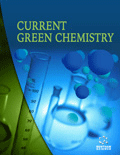
Current Green Chemistry
Catalyzing change through sustainable chemical practices.Current Green Chemistry, published by Bentham Science Publishers, is a pivotal scholarly resource devoted to advancing the field of green chemistry. With ISSN 2213-3461 and E-ISSN 2213-347X, this journal serves as a crucial platform for researchers and professionals to explore innovative and sustainable practices within the chemical sciences. The journal has demonstrated significant recognition, evidenced by its categorization in the third quartile (Q3) across various specializations including Analytical Chemistry and Inorganic Chemistry, and even a fourth quartile (Q4) in Organic Chemistry, according to the latest Scopus metrics. This indicates a growing influence in relevant fields, making it a valuable reference for contemporary environmental initiatives. The journal's accessible nature, although not open access, ensures researchers can still engage with high-quality, peer-reviewed content. Spanning an impressive converged period from 2019 to 2024, Current Green Chemistry is committed to enhancing the visibility of groundbreaking research that aligns with sustainable development objectives, making it an essential resource for anyone interested in the future of chemistry.